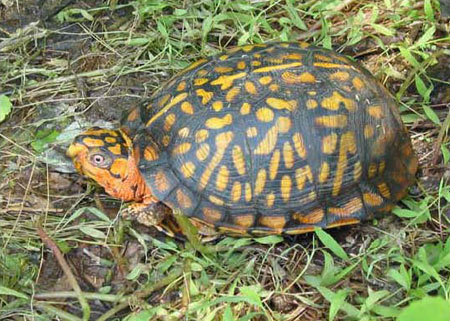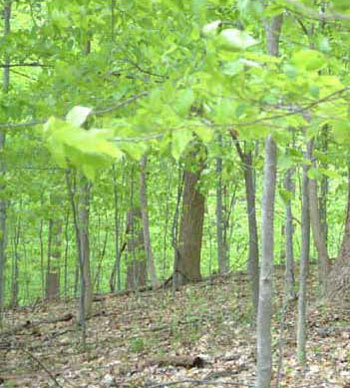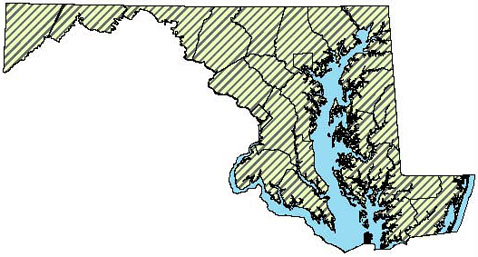Field Guide to Maryland's Turtles (Order Testudines)
Main_Content
Eastern Box Turtle (Terrapine carolina) | | Common Name:
|

Photo of Eastern Box Turtle courtesy of Scott A. Smith
|
Size: 4½ - 6 inches. Record - 7¾ inches |
Appearance:
- A high dome-like keeled carapace (top shell) of brown or black, with extremely variable yellow, orange or olive pattern of radiating lines, spots, bars or irregular blotches on each scute.
- Each scute has concentric growth rings, also giving the shell a sculpted appearance.
- The plastron (bottom shell) is strongly hinged (single) forming two movable lobes, the front lobe narrower.
- Four toes on each hind foot.
- Males have red eyes (usually but not always), while female’s eyes are yellowish brown.

Photo of Habitat for
Eastern Box Turtle
courtesy of Rebecca Chalmers
|
Habitats:
A terrestrial species, commonly encountered in rich, open woodlands and
riparian forests, but
may also be found in pastures and wet meadows, and during hot weather may be
found soaking in shallow waters and mucks of various wetland types or under leaf litter.
|
How to Find:
Commonly found during the day crossing roads between forest and wetland
habitats in spring
and summer. Search in moist open woodlands, grassy fields and wetland edges.
Active early April to October.
|
Distribution in Maryland:Found throughout Maryland.

|
|
